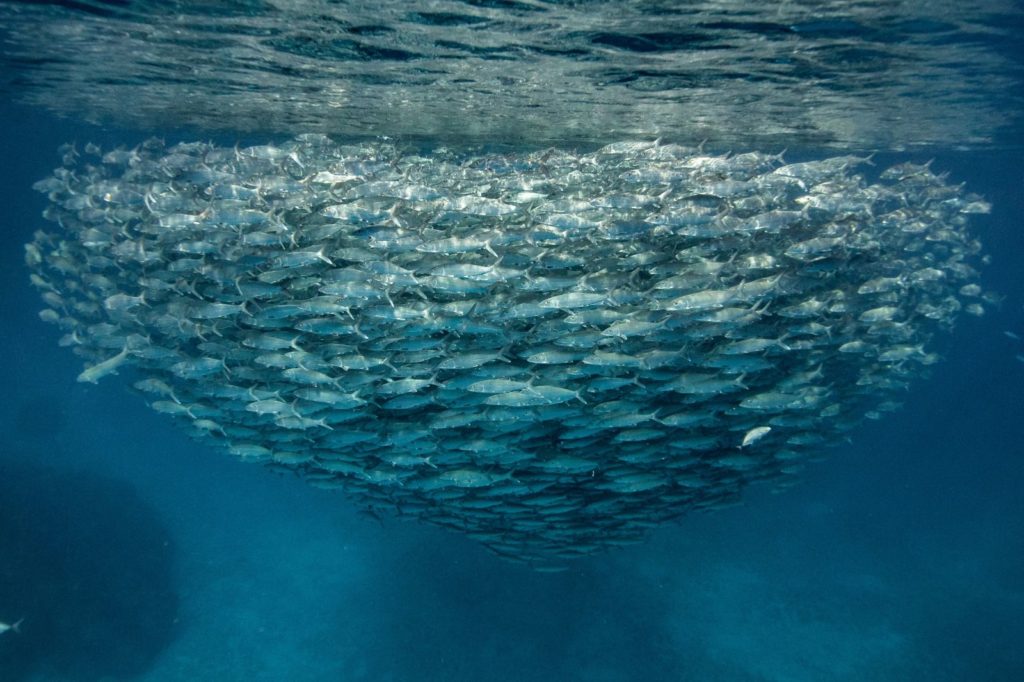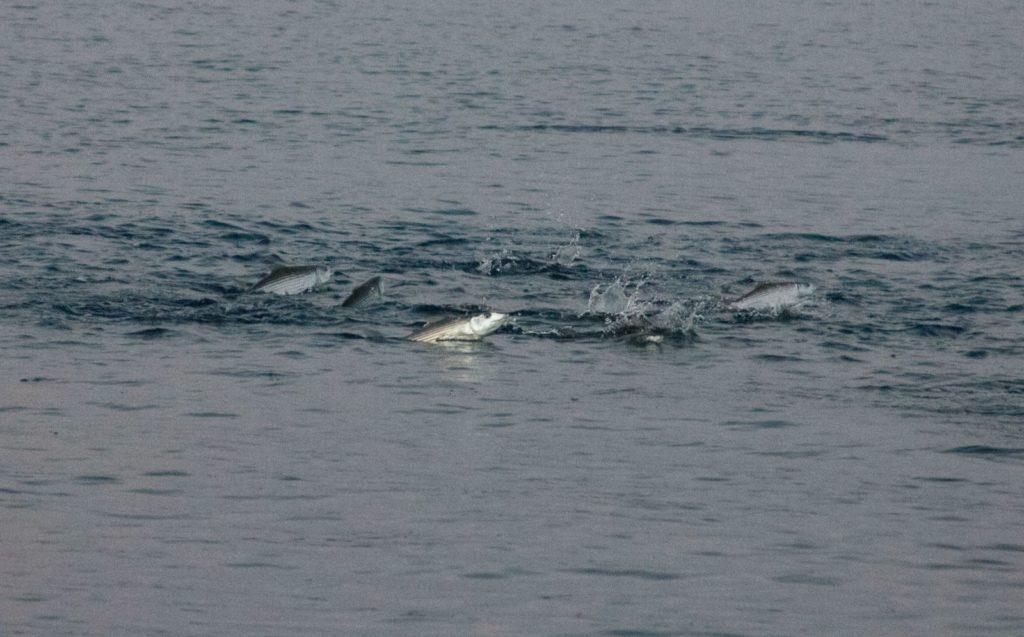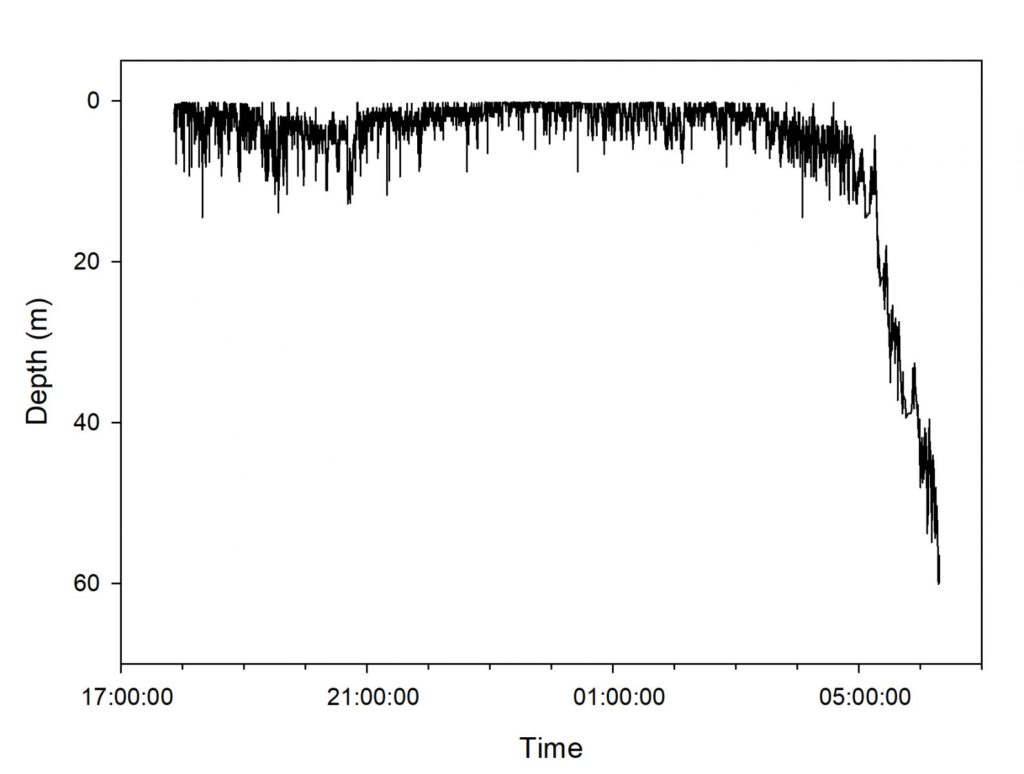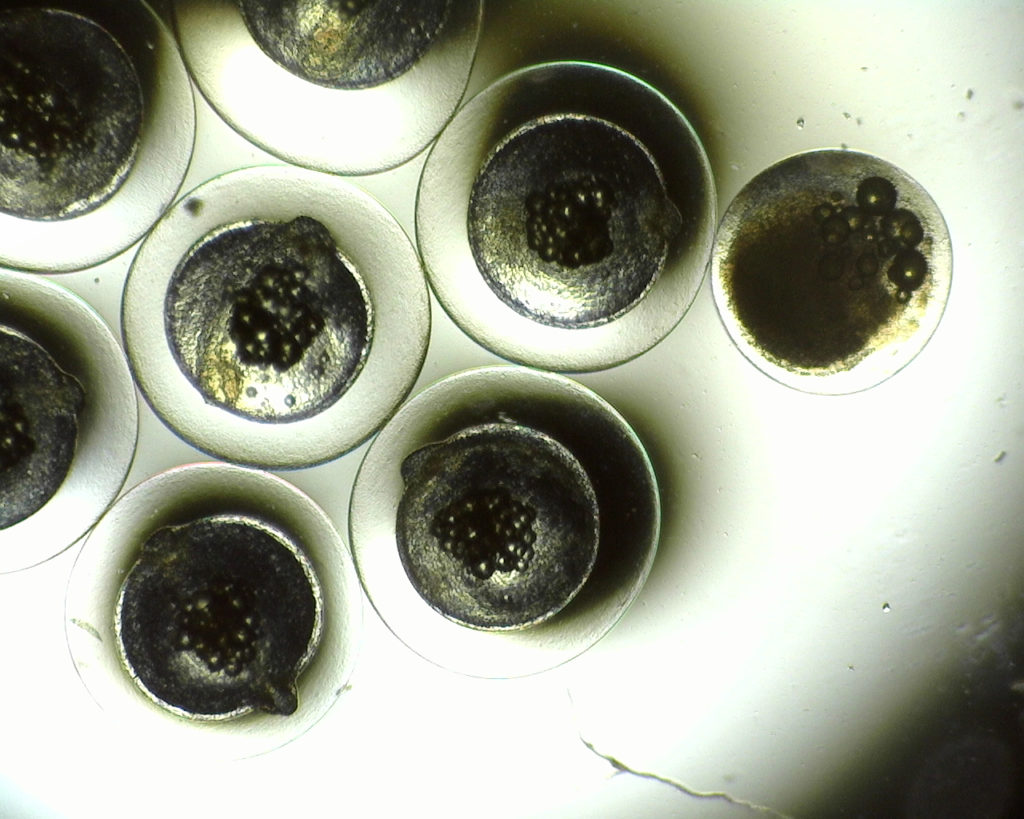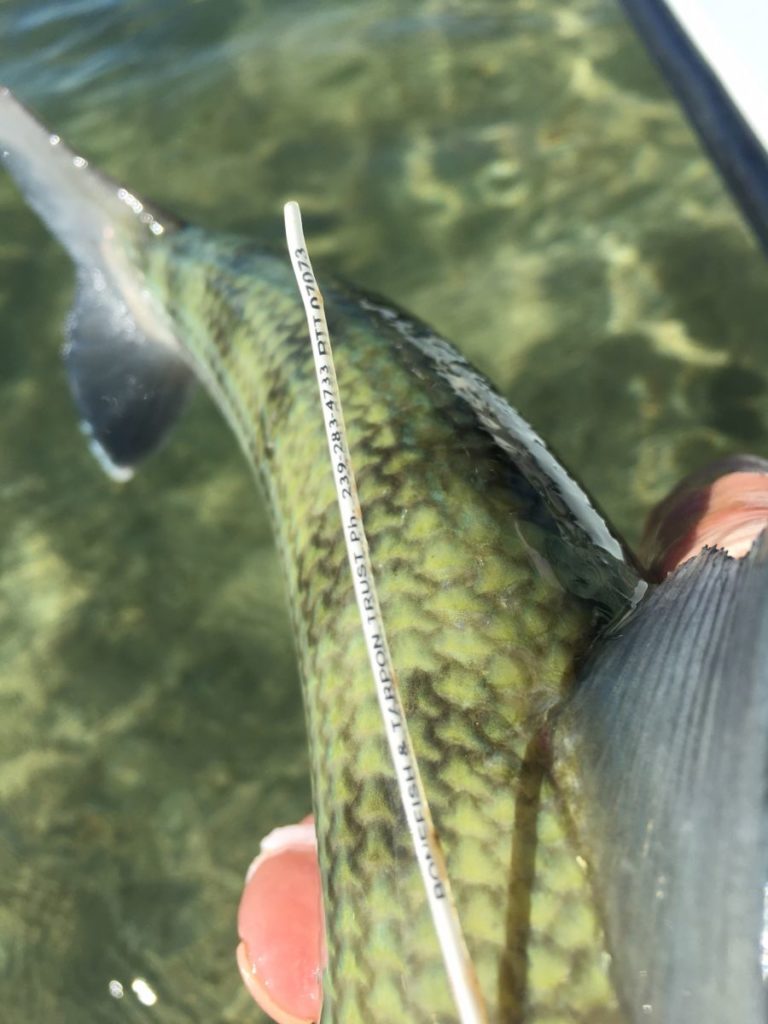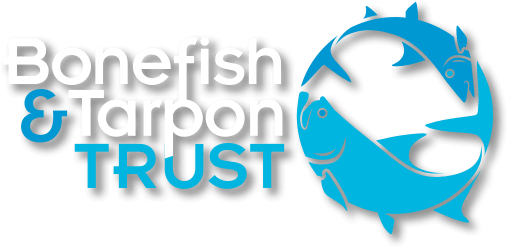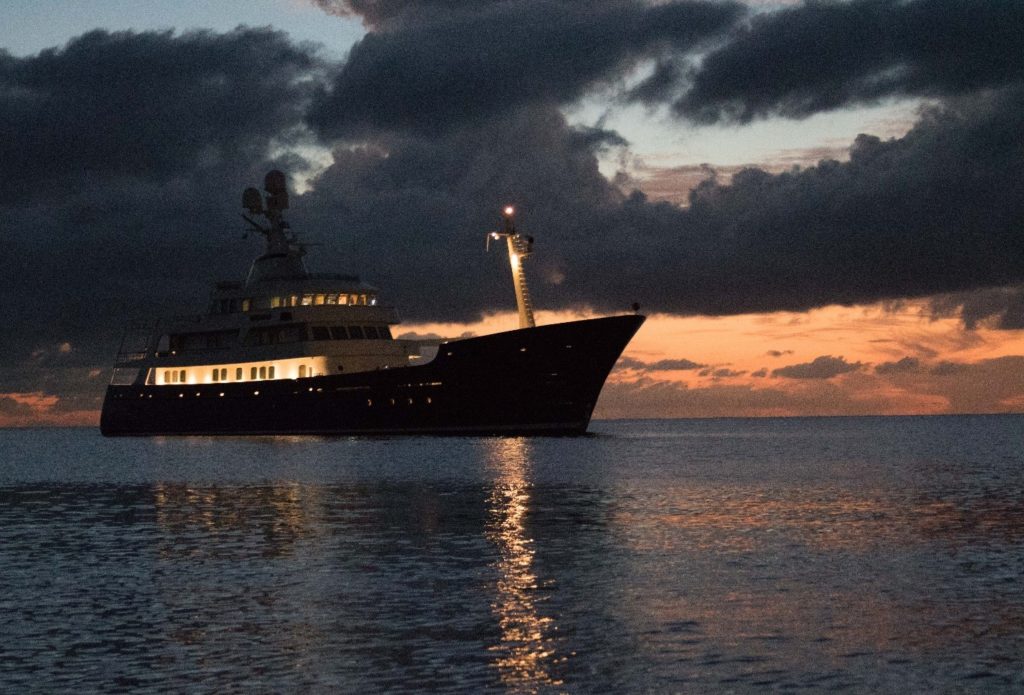(The M/Y Albula at dusk – the view from the tracking boat as it begins an overnight track of bonefish moving offshore to spawn. Photo: Dr. Aaron Adams)
During this bonefish spawning season in the Bahamas (late October – early April), a team of scientists from Bonefish & Tarpon Trust and Florida Atlantic University Harbor Branch Oceanographic Institute completed two cruises to the Bahamas aboard the M/Y Albula. The trips were sponsored by the Fisheries Research Foundation.
The goals of these research cruises are to: identify bonefish pre-spawning sites; track bonefish offshore to determine spawning locations and depth of spawning; link pre-spawning sites to bonefish home ranges; understand bonefish reproductive physiology; understand larval behavior and diet. The first two cruises of the season have resulted in exciting new information.
A full report will appear in the upcoming Spring 2019 Bonefish & Tarpon Journal, but we’re too excited about the research not to share some of the highlights through the photos below.
The information we are gaining on these cruises will be used to:
- protect additional pre-spawning and spawning sites, and to understand which pre-spawning sites are most important to which flats.
- understand what factors are most important for successful bonefish spawning so we can focus on making sure conservation is correctly focused.
- as we learn larval behavior, we’ll become better at anticipating where larvae travel after being spawned, which will help us understand which locations are most important for protection.
We have two more cruises scheduled for this spawning season, so stay tuned for more reports. And be sure to pick up the new Journal in March to read the full story.
- A pre-spawn aggregation of bonefish getting ready to move offshore to spawn. Photo: Robbie Roemer
- Bonefish from a pre-spawning aggregation porpoising at the surface as they get ready to move offshore to spawn. Photo: Dr. Aaron Adams
- The depth of the bonefish aggregation during an overnight track. They remained near the surface from the time they leave the pre-spawning location at dusk, and then descended to 60 meters (200 feet) to spawn near dawn.
- Fertilized bonefish eggs. Photo: Dr. Jon Shenker
- A 2-day old bonefish larvae. Photo: Dr. Jon Shenker
- A bonefish that was tagged at a pre-spawning aggregation and recaptured 2 months later on its home flat 65 miles away. Photo: Justin Sands
